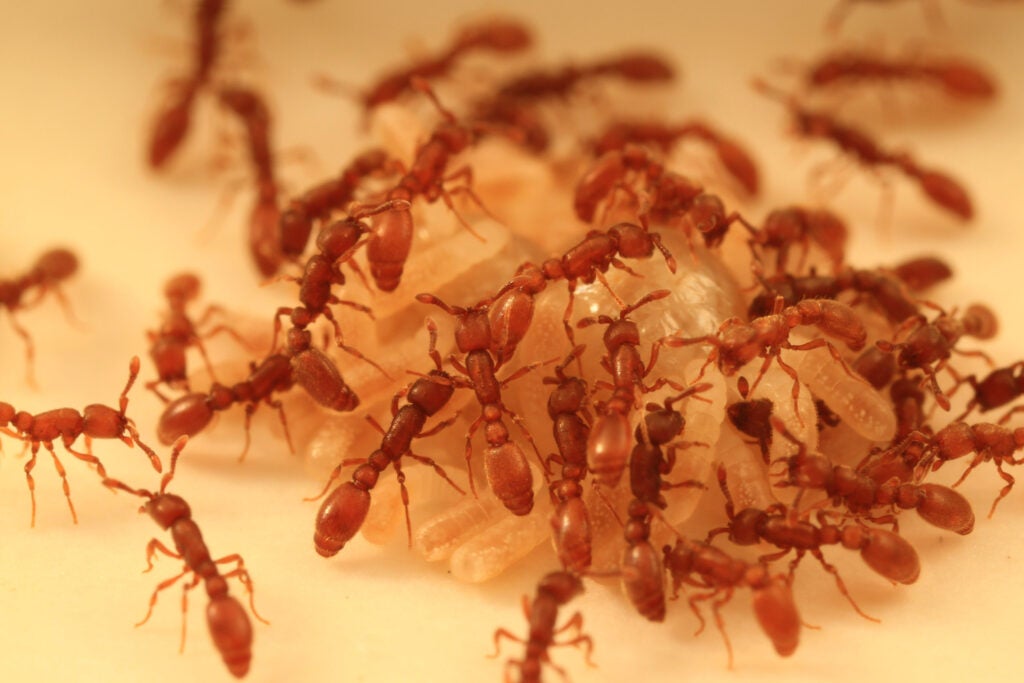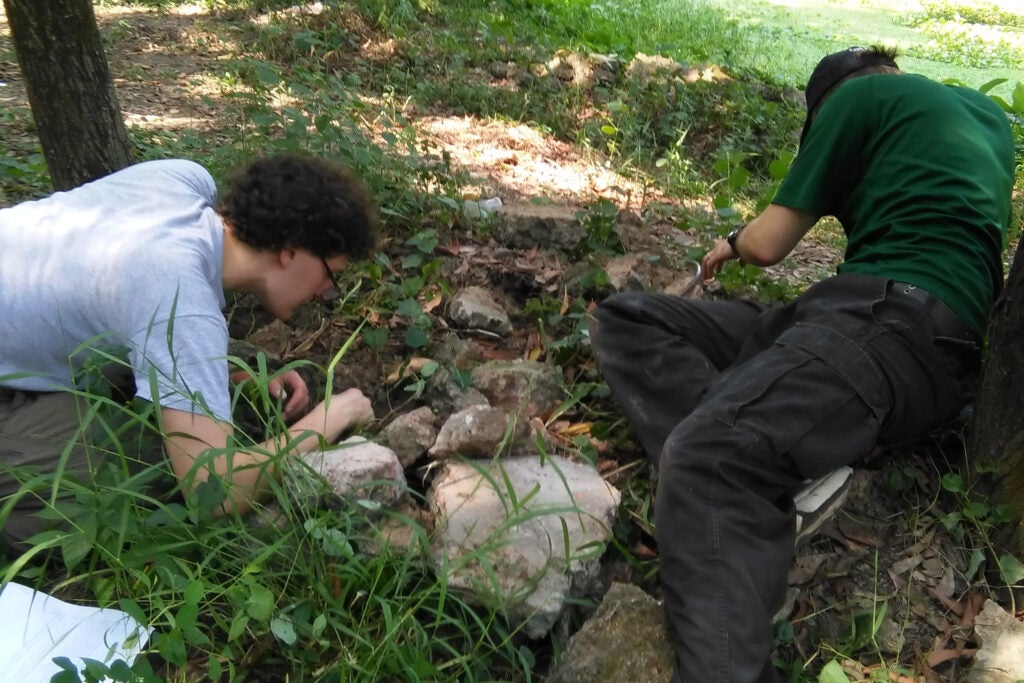Trible and McKenzie traveled to Bangladesh in October 2014. They coordinated with a German NGO to arrange reliable transport and other small but crucial details like hiring a local master’s student named Tawhid Hossain as their translator.
“By the end of the second day, we had a small backpack full of money, a car, a guide and a driver, and we were on the road out toward Western Bangladesh where our contacts knew of a professor out there who could get us started with some places to look for these ants, because we didn’t really have a great idea of even where we could find the ants in the first place,” McKenzie said.
Their mission was complicated by the fact that Bangladesh has little protected land, forest, or completely uninhabited areas where ants like this flourish. Most of the places the pair looked were private yards, construction sites, or small fields like those on university campuses — all of which necessitated flipping not only rocks but bricks and assorted debris from razed buildings.
“From the road, we’d see what looked like a good place, so we would stop the car and our translator, Tawhid, would go find someone and ask them, ‘Who owns this? We have these researchers from America who are looking for ants. Would you mind if we could come look around?’” Trible said.
While the translator would chat with the property owners over tea, Trible and McKenzie would dig for clonal raider ant colonies for an hour or so before moving to the next site.
They had no luck the first few days and the locals thought they were up to something strange.
“A lot of them thought we were eating the ants because they weren’t really sure why a couple of Americans would be crawling around in the dirt trying to find ants if they weren’t good for something,” McKenzie said.
Then they caught their break, turning over a brick and spotting a single clonal raider ant. They pounced, collected it, and started digging. The giant hole turned up only five more ants, but the researchers were ecstatic.
“It was a big relief to know that we wouldn’t come home empty-handed,” Trible said.
Working 16-hour days, they found 16 colonies. Once, they even flipped a rock and found a colony of about 500 ants.
They kept the ants in humid petri dishes. Tragedy almost struck midway through the trip when a quarter of the ants they found died because they left the dishes in the sun too long during a lunch break. That slip made the 24-hour trip home even more nerve-wracking. If none of the ants survived, the trip could be ruined since the researchers hadn’t conducted their sequencing experiments.
“The interesting thing about studying genetics is that we can’t see DNA with our eyes, so when you collect things in the field you don’t know what you have until you get home,” Trible said.
Back in the lab, they got to work mapping the ants’ genetic sequence to see if the Bangladesh population was the source population for this invasive species. They describe the work in the report published in June.
Their analysis showed there were seven different lineages present. Two were identical to two of the four strains already known throughout the world. The other five had never been seen in the hundreds of colonies the researchers and collaborators had studied before. This was a telltale sign that they’d found the source populations. In population genetics, genetic diversity will always be greater in populations where a species originates than in populations where they have been introduced by humans.
The scientists further cemented their finding using a statistical method to build the genealogy, or family tree, of the different strains to see how they are related. That molecular phylogenetic analysis showed that the five new strains share a recent common ancestor with the four invasive strains found around the world — an ancestor that lived in Bangladesh.
“The two findings together are basically a smoking gun,” said Trible.
In short, mystery solved.

